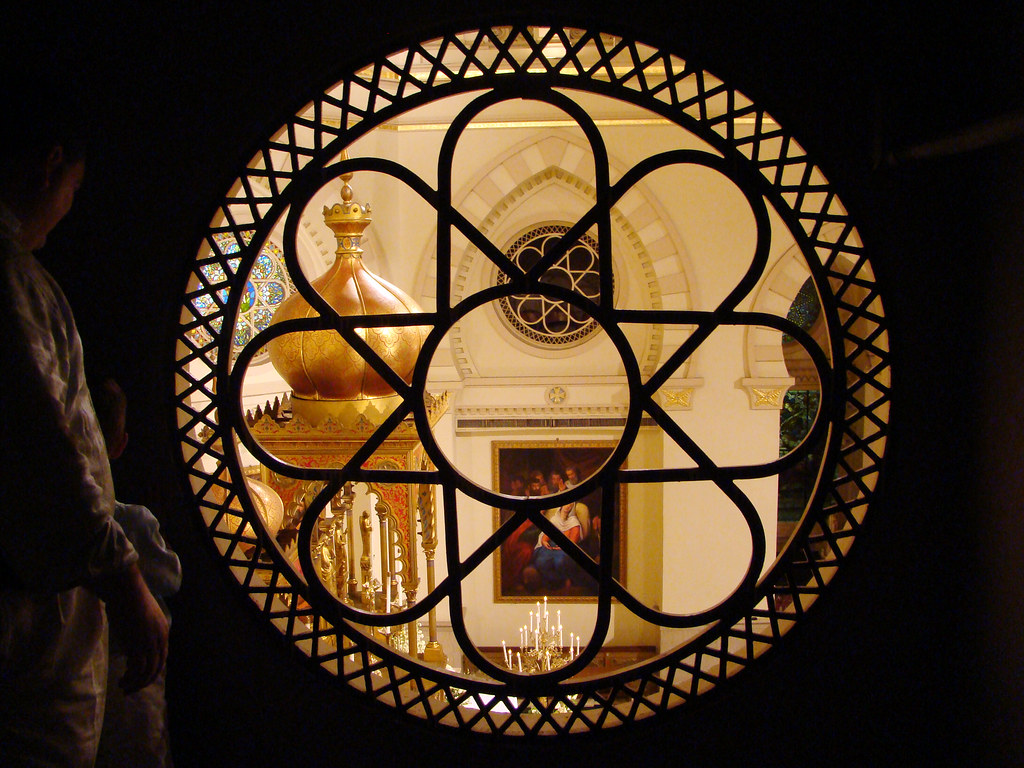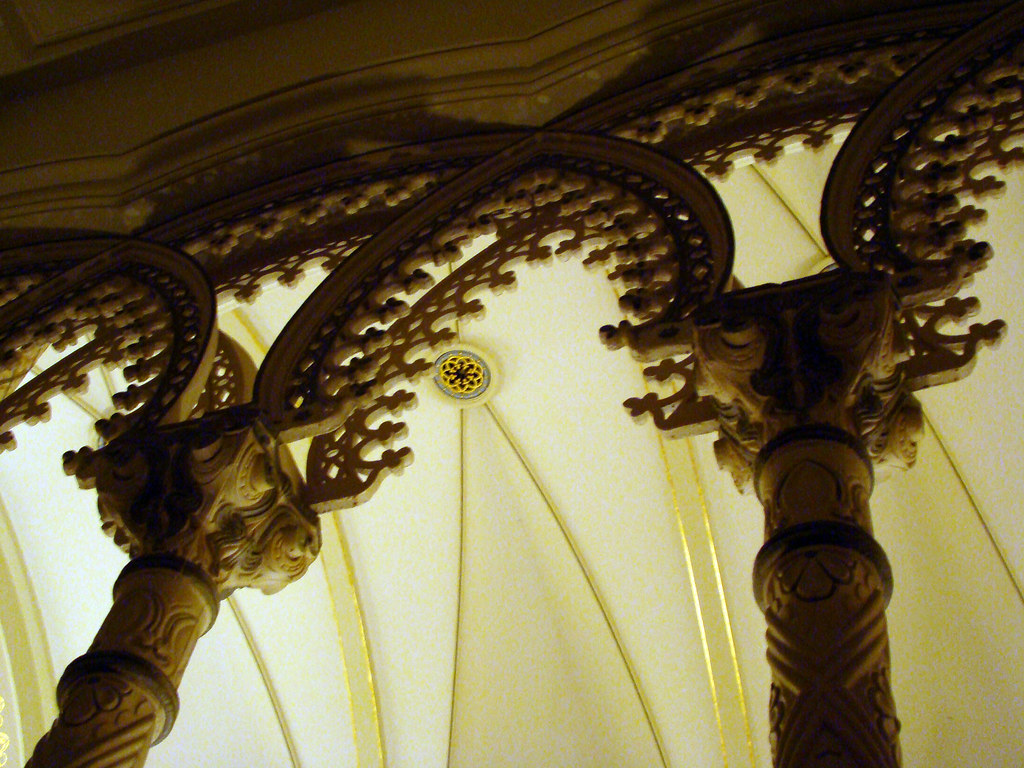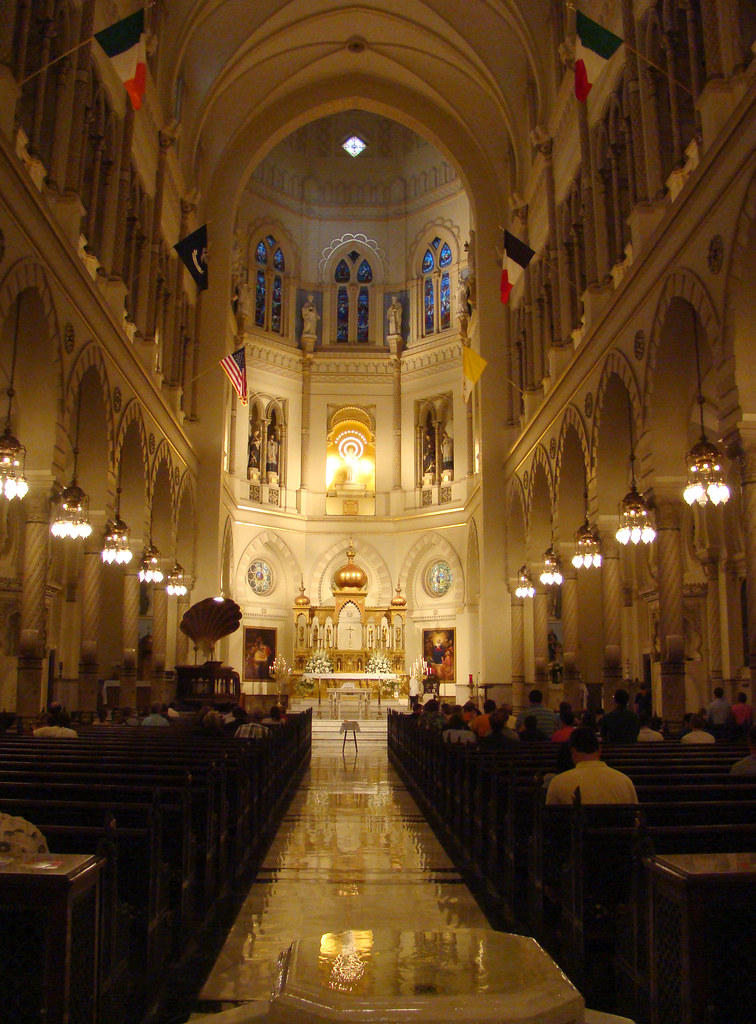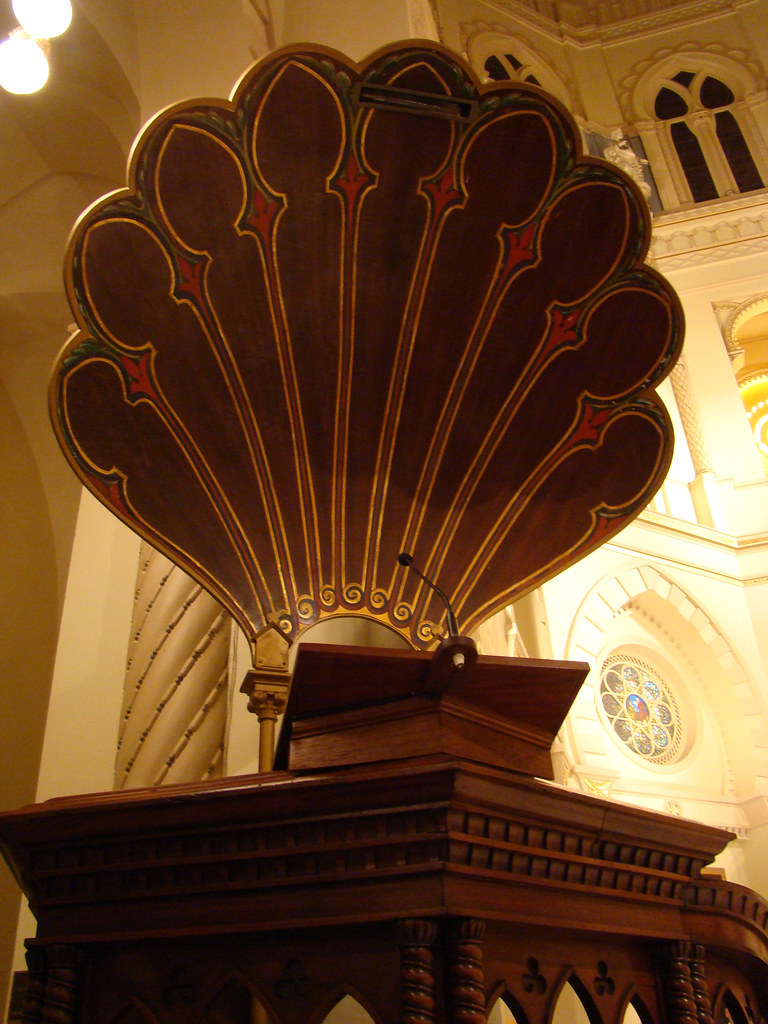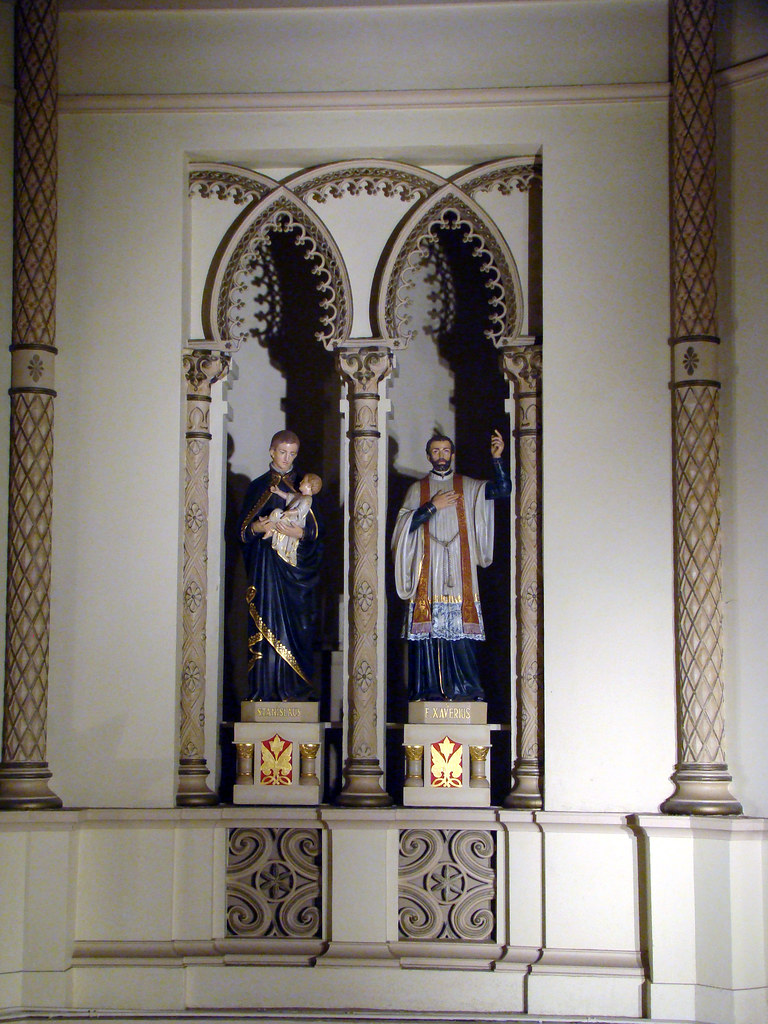The only thing that is more fun than eating jambalaya and beignets, is visiting with our many relatives New Orleans. We shared several memorable meals with cousins, aunts, uncles, and nephews and we attended Sunday mass with George Schiaffino, his wonderful wife and their precious baby. George is not one to get up early to attend Sunday morning mass in the heat of day, so he chooses to attend the 7:30 Sunday evening mass. Given that we were still operating on California time, we were grateful to accept George’s invitation to join him at the historic Immaculate Conception Jesuit Church, or simply "Jesuit Church" as it is popularly known.
The history of the French Jesuits in New Orleans dates back to the time when La Salle claimed the Territory of Louisiana for France in 1682. The Jesuits evangelized the Native American nations in the Mississippi Valley and New Orleans became the headquarters for the mission.
In 1725, with the help of the founder of New Orleans, Jean Pierre Lemoine Sieur de Bienville, the Jesuits gained permission from King Louis to develop the Louisiana Territory. After outgrowing a home in the heart of the French Quarter, they grew sugar, tobacco and oranges on the “Jesuit Plantation”, situated on a water-covered cypress swamp two blocks upriver from the French Quarter.
By 1763, the Jesuits enjoyed great power throughout the world, but in 1773 their influence came to an end when Pope Clement XIV signed a decree to suppress the Order. Every Jesuit priest and brother was ordered back to France. Jesuits did not return to New Orleans until 1837.
In 1846, Jesuits from Lyons, France purchased the same property where the plantation stood for $22,000. Friar John Cambiaso erected two buildings which served as a college, residence, and church. His love for Moorish architecture is reflected throughout the buildings:
The history of the French Jesuits in New Orleans dates back to the time when La Salle claimed the Territory of Louisiana for France in 1682. The Jesuits evangelized the Native American nations in the Mississippi Valley and New Orleans became the headquarters for the mission.
In 1725, with the help of the founder of New Orleans, Jean Pierre Lemoine Sieur de Bienville, the Jesuits gained permission from King Louis to develop the Louisiana Territory. After outgrowing a home in the heart of the French Quarter, they grew sugar, tobacco and oranges on the “Jesuit Plantation”, situated on a water-covered cypress swamp two blocks upriver from the French Quarter.
By 1763, the Jesuits enjoyed great power throughout the world, but in 1773 their influence came to an end when Pope Clement XIV signed a decree to suppress the Order. Every Jesuit priest and brother was ordered back to France. Jesuits did not return to New Orleans until 1837.
In 1846, Jesuits from Lyons, France purchased the same property where the plantation stood for $22,000. Friar John Cambiaso erected two buildings which served as a college, residence, and church. His love for Moorish architecture is reflected throughout the buildings:
The first mass at The College of the Immaculate Conception was offered eleven years later. Despite heroic efforts to reinforce the swamp-based foundations, the buildings were declared structurally unsafe 71 years later in 1928. The church was dismantled, brick by brick, while meticulous records were kept. Here is a heartbreaking excerpt:
“The historic statue of Our Immaculate Mother that has stood for over half a century in the resplendent niche above the golden altar is taken down today, July 26, 1928. The workmen laid it on a little truck and rolled it to a storage place next door. The scene was very sad and looked like a depressing funeral. I pray that our glorious Queen of Earth and Heaven may soon rise again and be placed on a throne more beautiful than the one from which she has just been removed, owing to dire necessity”.
“Mary’s statue is solid marble. She was hand carved by Denis Foyatier, who carved Our Lady out of the purest marble. The statue of Mary stands there in the serene simplicity like a mother beckoning her children to come closer and to be in peace. The statue is bathed in light with a beautiful gold background."
First mass was said in the new Immaculate Conception Church on March 2, 1930.
The Main Altar (Opening photo) “This altar was built in 1867 of gilded bronze and won first prize in the Paris Exposition of 1867. The altar was designed by James Freret of New Orleans, but was constructed in Lyons, France. There are more than 600 pieces to this altar. The Moorish domes on top of the altar as well as the miter-shaped arches all harmonize perfectly with the architecture of the entire building.” Four Saints Under Mary’s Niche St. Stanislaus – A model and mirror of religious perfection St. Francis Xavier – Great missionary to India and Japan St. Ignatius - The founder of the order of the Society of Jesus (not shown) St. Aloysius – Patron of youth, devoted to the care of the sick (not shown)
Mosaic Shrines This is one of two mosaics commissioned in Italy in 1930. It celebrates Mary under the title of Our Lady of Prompt Succor as she miraculously granted =two appeals of help= from the nearby Ursuline nuns:
“The original (Ursuline) building was riddled with problems caused by the climate, soil, and weather conditions. The present building was completed around 1752. Here, the legend of the city's patroness, Our Lady of Prompt Succor, was born. In 1788, a great fire swept away the hundreds of homes and also threatened the convent. Sister St. Anthony, one of the old nuns, climbed the convent stairs carrying the small statue of Our Lady. As the Superior watched, Sr. St. Anthony set the statue on the sill facing the fire, then knelt and prayed with great confidence. At that very instant the wind veered and the flames were blown back.”
“The night before the Battle of New Orleans in the War of 1812, nuns and relatives of the men fighting with Andrew Jackson’s forces spent the night in prayer before the statue of Our Lady of Prompt Succor. Miraculously, the badly outmanned and underequipped Americans defeated the British. In keeping with a vow made that day, a Mass is celebrated every January 8th in thanksgiving. The miraculous statue is presently at home in the National Shrine of Our Lady of Prompt Succor, at the Ursulines latest home.”
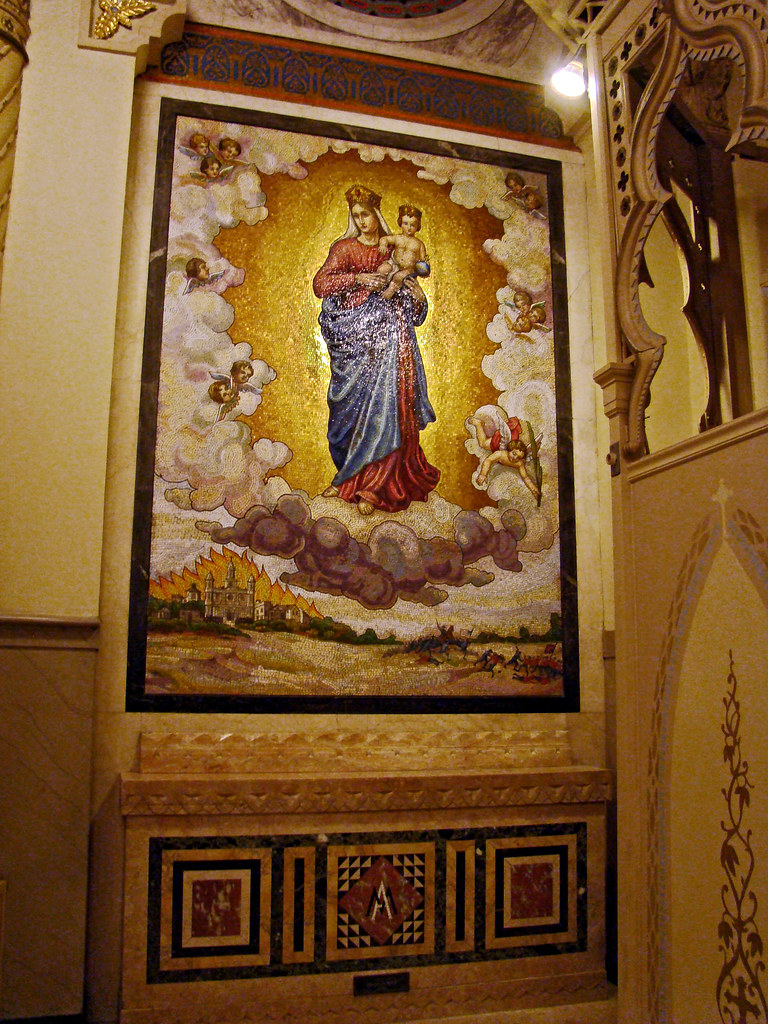
If you are in New Orleans on a Sunday evening, you may be interested in attending Jesuit Church for the 7:30 p.m. mass. Chances are good that George Schiaffino will be one of the readers at the pulpit. Please let him know that you read about him at dutchbaby’s. Most of the hystorical information from here.



